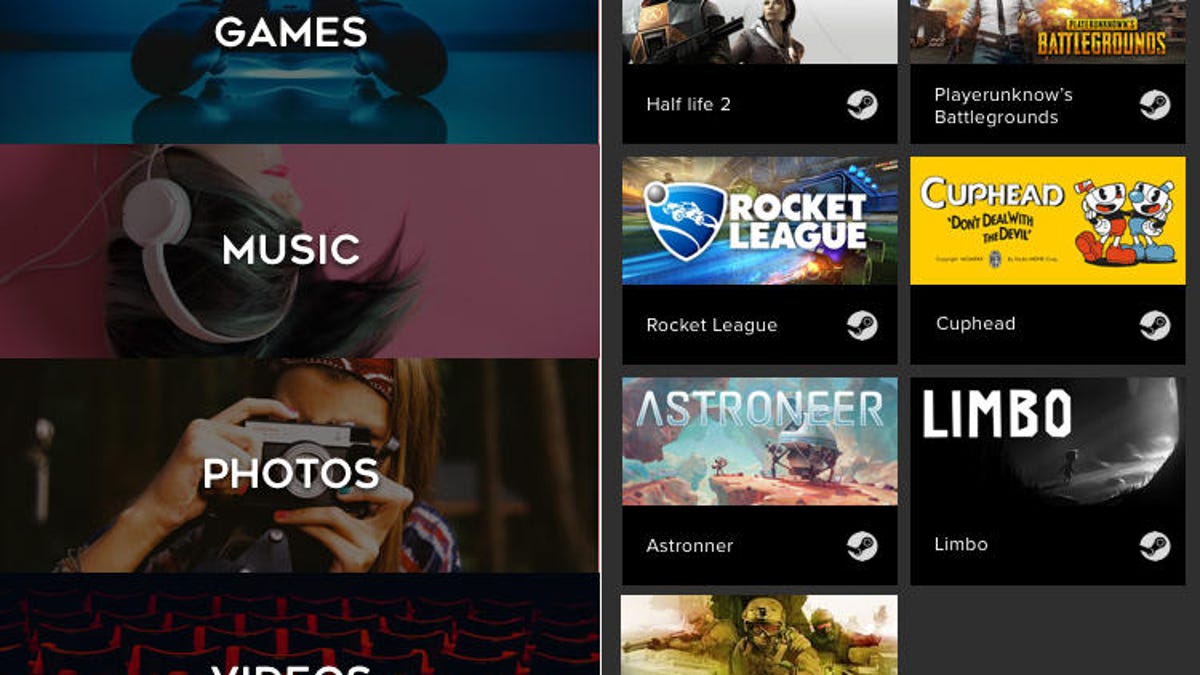Blade Shadow cloud gaming to launch across the US in October
Now that it's worked out the kinks in California, the updated service will hit the east coast next week and the rest of the US in October.

Shadow Beyond wraps Windows 10 navigation in a more mobile, small-screen-friendly interface.
Ready or not, here it comes. Blade's Shadow desktop-in-the-cloud (but really focused on gaming) service that lets you play on any device makes its east coast debut next week, to be followed by a full rollout across the US in October.
The company says it's fixed a lot of problems that cropped up in its rocky California-only phase. Notably, it developed technology to compensate for network latency problems, the biggest bugaboo facing cloud gaming: It uses AI to predict and preemptively adjust for packet gaps. The service is still optimized for an eminently reasonable 15Mbps bandwidth, which is no problem on 4G LTE (unless you're on T-Mobile in my office).
That can go a long way to fixing pausing and stutter, but audio dropout plagues even the smartest cloud-gaming solutions; it'll be interesting to see if this helps. The system also now has in-game microphone support, a big drawback during the initial rollout.
While playing desktop games on your phone sounds wonderful, navigating Windows 10 on a 6-inch screen is less so. Blade developed client apps called "Shadow Beyond" for any device running iOS 10 or later (11+ recommended) or Android 6 or later that wraps Windows 10 in a mobile-friendly interface.
Security is also improved, incorporating two-factor authentication to log in to the service as well as any security measures you choose to log into Windows.
One thing that hasn't changed: The $35 per month bill. It's one of those prices that makes mathematical sense -- a $2,000 PC is equal to 57 months! -- but feels viscerally unpalatable to a lot of people overburdened with monthly subscriptions. It's more than 4K Netflix, Apple Music and Amazon Prime subscriptions combined. However, Blade changed the plan so you don't have to pay annually to get better prices -- it's the same price no matter what.
Blade has also added storage upgrade plans, because 256GB barely holds anything these days. You'll be able to supplement with an unlimited number of one terabyte increments for $10 per TB per month.
The system specs remain unchanged as well. You still get a shared Intel Xeon E5-2667 v4 CPU, for performance roughly equivalent to a quad-core seventh-generation Core i7, and Nvidia Quadro P5000 GPUs, which have similar specs to the GeForce GTX 1080. The company says those components make it possible to play any game at high-quality settings up to 1080p 144Hz or 4K 60Hz.
In addition to being the only service that lets you play on any device, that 4K claim makes Shadow standout in the increasingly crowded cloud-gaming skies; the rest of the field tops out at 1080p. But if you've ever tried to play a game in 4K at high quality on an i7 system with a GTX 1080, you know it's hit and miss performance-wise.
Compared with the pace of other cloud-gaming launches, such as Nvidia's perpetual GeForce Now beta, Blade's seems positively jetpack driven. It's not only delivering to consumers on an aggressive schedule, but it's partnered with Thunder Gaming, an esports center in California, as a test site to experiment with ways cloud gaming can fit into the performance-obsessed esports picture.
We've been hearing and seeing a lot about nascent cloud-gaming efforts, including Electronic Arts' service, but demos are notoriously unrepresentative of real-world operation; the latest version of Blade Shadow looked great, but it demoed well at CES 2018 when I first saw it, too. One concern with Shadow is scalability; Blade says it will have five datacenters for the whole country which seems awfully few. The east coast servers are in New Jersey, which is great for us New Yorkers but possibly not so great for Floridians.
We shall see. We'll get a chance to dig into the latest update when the east coast goes online starting Aug. 9.

